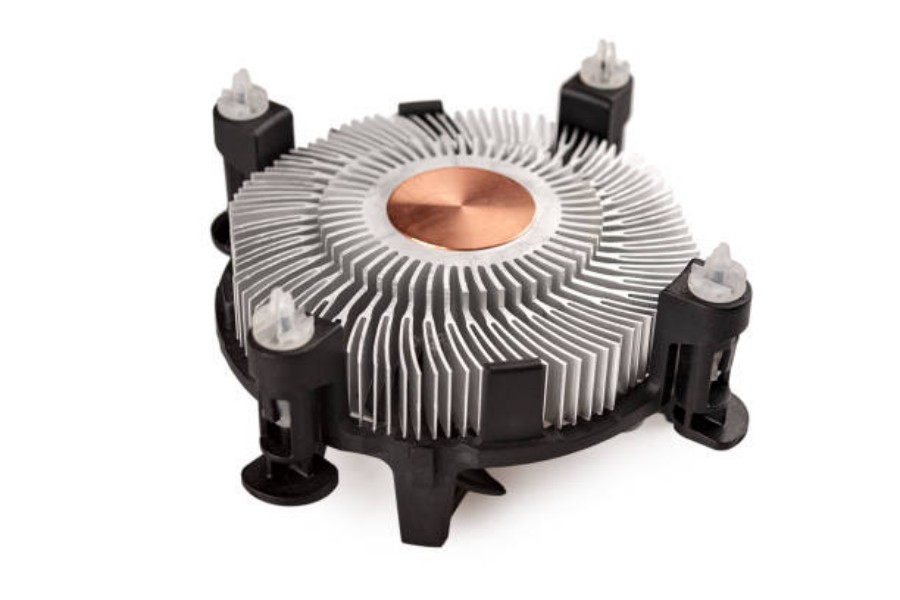The Benefits of Using a Low Profile M 2 Heatsink
If you frequently use your computer for prolonged periods, the chances are that you're familiar with the problems that overheating can cause. Fortunately, there are different approaches to cooling your computer, one of which is using a low profile M 2 heatsink. These heatsinks have numerous benefits, including being cost-effective and quiet. Additionally, they are an excellent option for small form-factor builds and systems with space limitations, as they are considerably smaller and lightweight than traditional heatsinks.
The Different Types of Low Profile M 2 Heatsinks Available in the Market
There are several types of low profile M 2 heatsinks available, depending on your requirements. One type is the passive heatsink, which dissipates heat naturally. While this option is quiet and requires no electricity, it is not as efficient as active heatsinks. Another type of low profile M 2 heatsink is the active heatsink, which uses fans to dissipate heat and is better suited for high-performance systems. A third option is the liquid cooling system, which utilizes coolant fluid to transfer heat away from the CPU or GPU.
Factors to Consider When Choosing a Low Profile M 2 Heatsink
Choosing the right low profile M 2 heatsink for your computer can be challenging, given the many options available. However, certain factors can guide your decision. Some essential aspects to consider when buying a low profile M 2 heatsink include your budget, system specifications, noise level, aesthetics, and performance requirements. Consider researching customer reviews and expert opinions before making your final decision.
The Installation Process of Low Profile M 2 Heatsinks
The installation process for a low profile M 2 heatsink is relatively straightforward, provided you have the necessary tools and follow the manufacturer's instructions. Begin by removing the existing heatsink and fan from the system, align the M 2 heatsink in the correct position, and then secure it using screws or clips. Be sure to apply thermal paste correctly to ensure maximum contact and better heat transfer. It is also best to consult your system's manual or online resources if you're unfamiliar with the process.
Common Issues Faced with Low Profile M 2 Heatsinks and Their Solutions
Using a low profile M 2 heatsink comes with its fair share of challenges. One common issue is compatibility. Some heatsinks may not be compatible with specific motherboards or CPUs. Another issue is insufficient cooling performance, mainly when using passive heatsinks in high-performance systems. To solve these issues, ensure that the heatsink you choose is compatible with your system, and consider opting for active heatsinks for better cooling performance.
Comparing Low Profile M 2 Heatsinks with Traditional Heatsinks
Comparing low profile M 2 heatsinks with traditional heatsinks is essential in understanding the benefits that each offers. Traditional heatsinks are generally more massive and more efficient than their low profile counterparts, making them a better option for high-performance systems. However, they also tend to be more expensive and noisier. Low profile M 2 heatsinks are best suited for smaller systems that require space-saving components, and are generally more affordable and quiet. Overall, the type of heatsink you choose will depend on your system requirements.
The Best Brands for Low Profile M 2 Heatsinks
Several brands offer reliable and efficient low profile M 2 heatsinks. One of the most popular brands is Noctua, which is known for its high-quality components and efficient cooling systems. Other brands that offer low profile M 2 heatsinks include be quiet!, Silverstone, Cooler Master, and Zalman, among others. Consider researching each brand's products before selecting the one that best suits your requirements.
The Price Range for Low Profile M 2 Heatsinks
The price range for low profile M 2 heatsinks can vary depending on the brand, model, and features. On average, passive low profile M 2 heatsinks range from $10 to $30, while active low profile M 2 heatsinks range from $20 to $60. Liquid cooling systems are generally more expensive, ranging from $50 to $150 or more. It is essential to consider your budget when selecting a heatsink, as well as your system specifications.
The Future of Low Profile M 2 Heatsinks
The future of low profile M 2 heatsinks looks bright, with new developments aimed at improving efficiency and performance. One area of focus is reducing the size of heatsinks while maintaining optimal cooling performance. Another area of focus is developing more cost-effective and energy-efficient cooling systems. Additionally, there is a growing demand for quiet and aesthetically appealing heatsinks in the market. Overall, the future of low profile M 2 heatsinks looks promising, with new developments catering to the evolving needs of computer enthusiasts.
Conclusion
Low profile M 2 heatsinks offer several benefits when it comes to cooling your computer. They are affordable, compact, and efficient, making them an excellent option for smaller form-factor builds and systems with space limitations. When selecting a low profile M 2 heatsink, consider factors such as your budget, system specifications, noise level, and performance requirements. Additionally, research different brands and their products to make an informed decision. With the right low profile M 2 heatsink, you can ensure the optimal performance and longevity of your computer system.

